Archives: Fun and Games
The Wolf in Sheep’s Clothing
The Wolf in Sheep’s Clothing
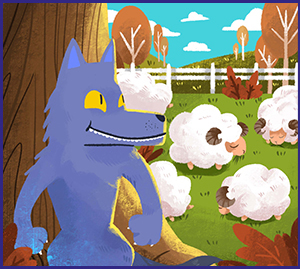
The City Mouse & the Country Mouse
The City Mouse & the Country Mouse

The Fox & the Grapes
The Fox & the Grapes
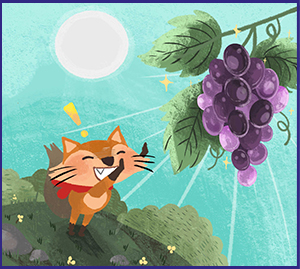
My Bedtime Story Torch and Projector – Fun Bedtime Stories
Secret Access
The Lion and the Mouse
The Lion and the Mouse
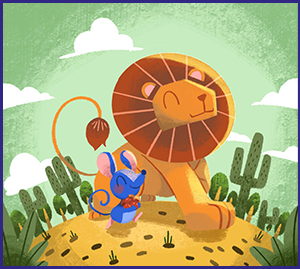
The Three Little Pigs
The Three Little Pigs
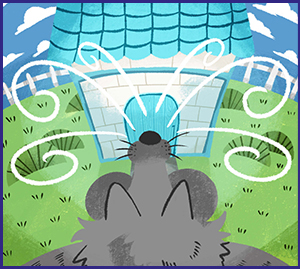
The Tortoise and the Hare
The Tortoise and the Hare

My Very Own Fairy Jar – GB

Fairy Food
Click here to download a PDF to make Fairy Energy Balls.
Click here to download a PDF to make edible Fairy Magic Wands.

Fairy Outfits
Click here to download a PDF to make Fairy Wings.
Click here to download a PDF to make Fairy Tiaras.

Fairy Music
Click here to download a PDF showing how to make a Harmonica.
Click here to download a PDF showing how to make a Spin Drum.

Fairy Craft
Click here to download a PDF showing how to make Fairy Crystals.
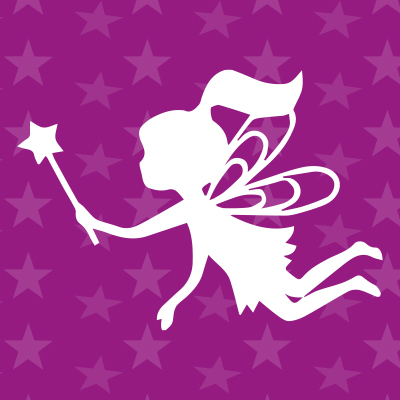
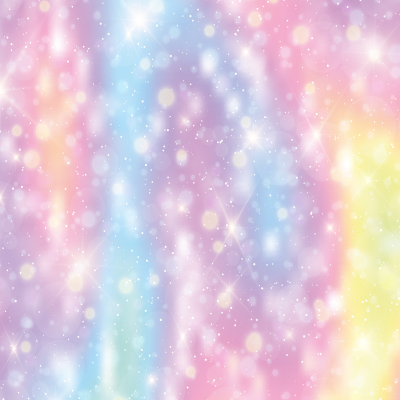
Fairy Wellbeing
Click here to download a PDF showing a Mindfulness Exercise.
Click here to download a PDF showing Yoga poses.
Click here to download a PDF showing Positive Affirmations.
My Very Own Fairy Jar
Secret Access
Night Sky – The Universe
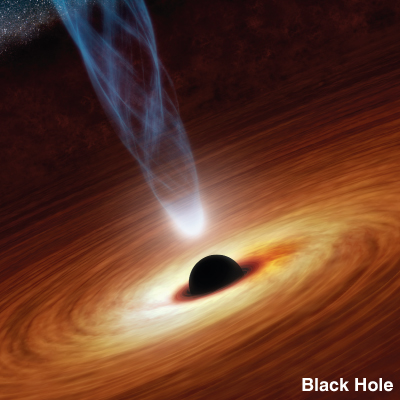

How big is it?
Scientists think that there are more stars in the universe than there are grains of sand on all the beaches on Earth – hard to imagine!
Earth is part of our Solar System, and our Solar System is a small part of the Milky Way galaxy. The Milky Way has 200-400 billion stars, with a supermassive black hole in the middle.
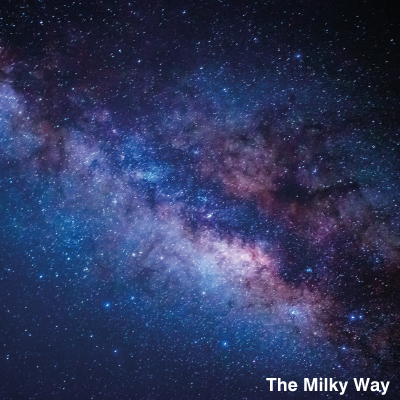
A galaxy is a collection of gas and dust and there are billions of stars in each galaxy. Scientists believe that there could be as many as one hundred billion galaxies in the universe.
How old is it?
Scientists believe that the universe is around 13,800,000,000 years old—that’s 13.8 billion years.
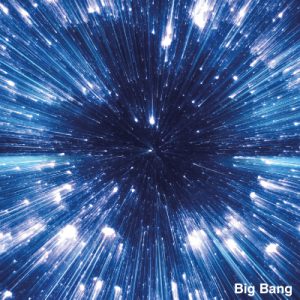
How did it begin?
13.8 billion years ago the universe was very small, very hot and very dense. So small, that it was thousands of times smaller than the head of a pin.
Then came the Big Bang – a massive explosion that started the universe. At first there were just tiny, heated particles, energy and light. As the universe started to cool down, the particles grouped together and formed atoms. Eventually the atoms grouped together to form stars and galaxies.
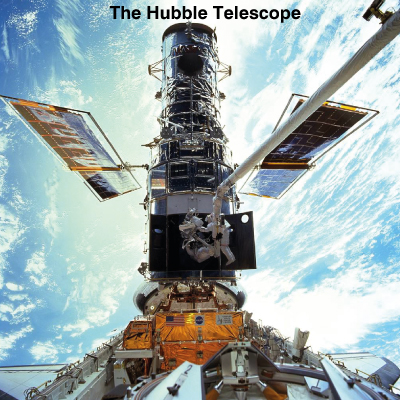
How do we know this?
In 1929 an astronomer named Edwin Hubble realised that the faint patches in the night sky were other galaxies and because they were faint, they had to be very far away. It would take billions of years for the light from those galaxies to reach us, so the universe had to be billions of years old. He also discovered that all those galaxies were moving away from us – so the universe had to be expanding. If they are moving apart, then they must have been closer together at some point, and from the speed of this separation, the age of the universe can be determined.
The Hubble Telescope was named after Edwin Hubble.
What is it made of?
So, the universe is made up of galaxies, planets and stars – black holes, comets and stuff – right? In fact, that is only 8% correct.
Scientists know that our universe is expanding, and it needs energy to expand. Scientists know that energy is there, but they do not know what it is or where it comes from. They call it dark energy and it makes up 65% of the universe.
There is also something that has gravity because scientists can see its effect on stars and galaxies. Scientists call this dark matter, but they do not know much about it. It makes up 27% of the universe.
Night Sky – Constellations
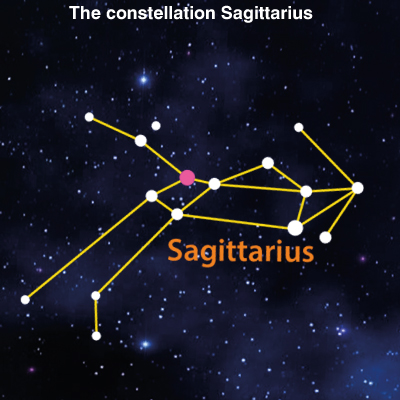
What are they?
The term constellation is used to describe stars that appear to be grouped together in a pattern, when viewed from Earth. In reality, most stars have no actual relationship to each other and can be light years apart, but throughout history, humans have grouped together stars that appear to be close together.

The International Astronomers Union have listed 88 official areas, or constellations, that divide the sky. These areas have definite boundaries, so that every place in the sky belongs within one constellation. Eugène Delporte drew up the constellation boundaries in 1930.
In western culture constellations are mostly based on Ancient Greek tradition and contain signs of the zodiac such as Aries, the Ram. Other cultures see different objects. Australian Aboriginal traditions, for instance, see a celestial emu. Where we see Capricorn the goat, ancient Aztecs saw Cipactli, the sea monster.
Stars and constellations appear to move in the sky. However, this is because we are moving and in fact, constellations stay in roughly the same place for many years. As such, they are often used for navigation.
Meteor showers are named after the area in the sky from where they appear to come. So, for example, the Perseid meteor shower comes from the area of the constellation Perseus, the Draconids from Draco and so on.
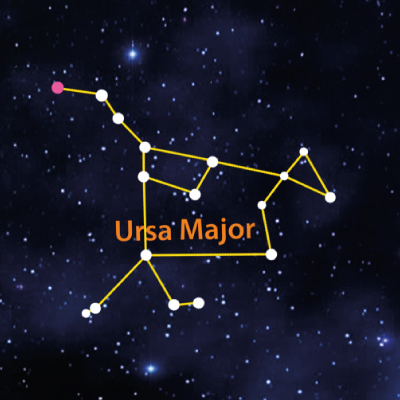
Some constellations in the Northern hemisphere
Ursa Major the Great Bear
Ursa Major is Latin for Great Bear and is one of the most well-known constellations in the northern night sky. Ursa Major’s seven brightest stars form the shape of a saucepan, known as the Big Dipper or Plough. When star shapes within a constellation are known in their own right, this is called an asterism. Ursa Major contains Messier 81 Galaxy, which is 12 million light years away.
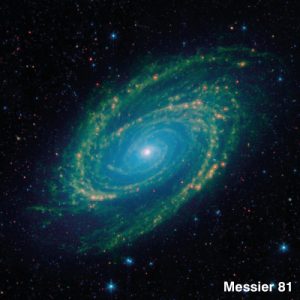
Messier 81
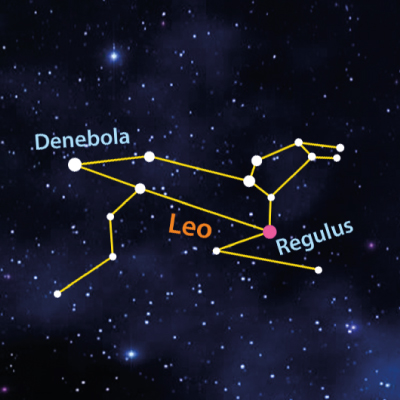
Leo the Lion
Some constellations are named after signs of the zodiac. In the Northern hemisphere these include Leo, Taurus (the Bull) and Gemini (the Twins). Leo contains many individual bright stars, such as Regulus and Denebola.
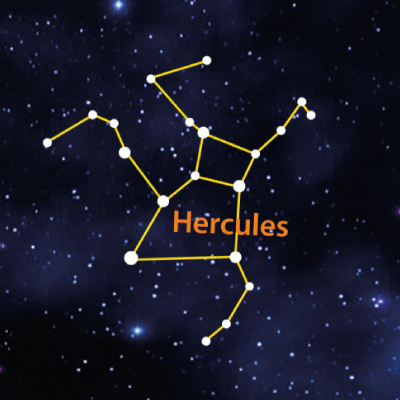
Hercules
Hercules was one of the 48 constellations listed by the 2nd century astronomer Ptolemy. It is named after a hero from Geek and Roman mythology. Hercules was the son of the god Zeus and Alcmene, a wise and beautiful mortal woman. As such, Hercules was partly immortal himself and was stronger than all mortal men. Hercules contains Messier 92 Galaxy, which has 330,000 stars.
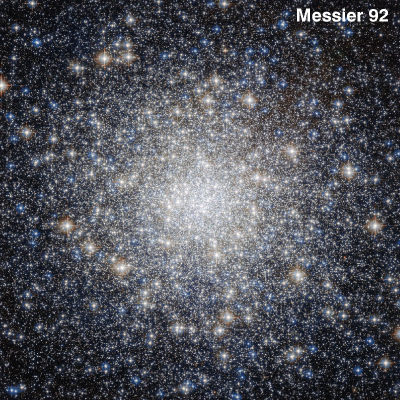
Messier 92
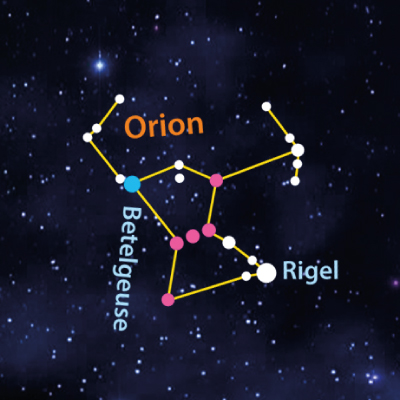
Orion the Hunter
This constellation is named after a character from Greek mythology. It is one of the most well-known constellations, easily recognizable by the belt of Orion, three bright stars that appear in a row. Surrounding the belt are four bright stars representing the hunter’s body. Orion includes well-known stars such as Betelgeuse, a massive red supergiant star nearing the end of its life, and Rigel, the sixth brightest star in the night sky.
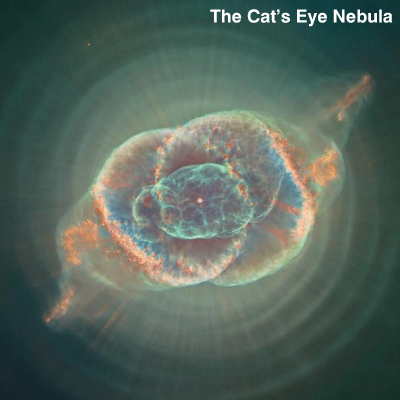
The Cat’s Eye Nebula
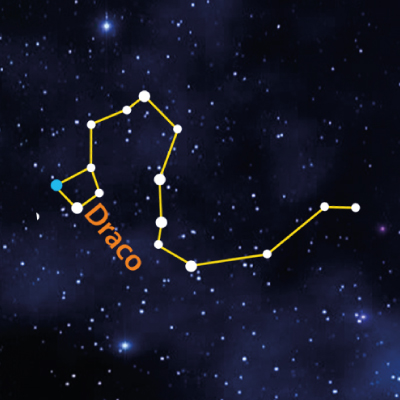
Draco
Draco is one of the largest constellations in the night sky. Draco means dragon in Latin and it represents Ladon, the dragon that guarded the gardens of the Hesperides in Greek mythology. Draco contains several famous deep sky objects including the Cat’s Eye Nebula and the Spindle and Tadpole Galaxies. The Tadpole Galaxy has a long tail!
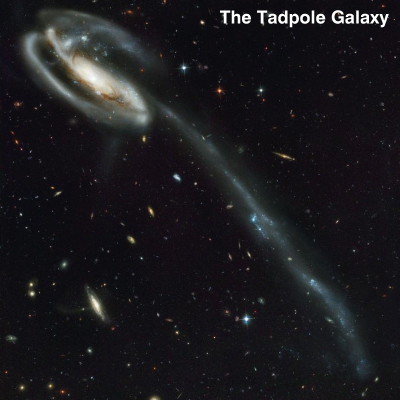
Note: the disc with these constellations is only available in the Northern hemisphere version – if you would like to purchase an additional Northern hemisphere disc please contact customerservices@brainstormltd.co.uk
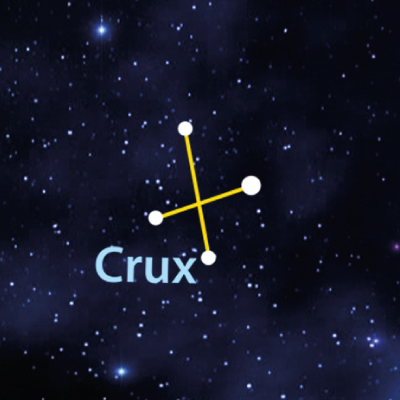
Some constellations in the Southern hemisphere
Crux
Crux is often known as the Southern Cross and is the smallest constellation in the night sky. It is the most well-known constellation in the Southern Hemisphere.
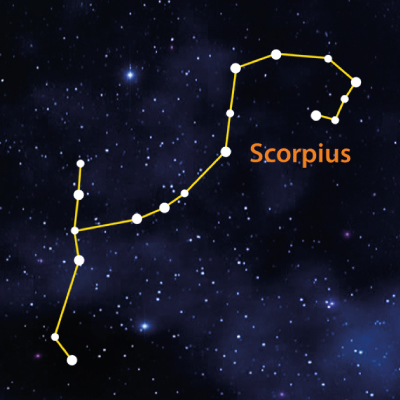
Scorpius the Scorpion
Some constellations in the Southern hemisphere are named after signs of the zodiac. These include Scorpius and Capricornus (the Goat). The main constellation of Scorpius is made up of 14 stars. Scorpius contains the Butterfly Nebula, which has a wingspan covering three light years and a dying star at its centre.
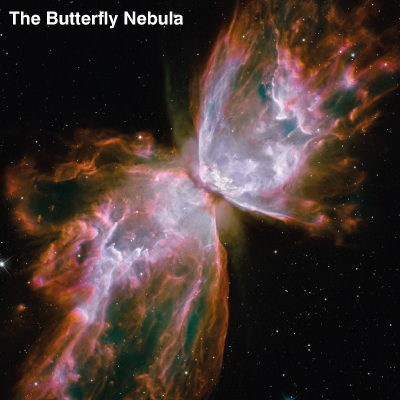
The Butterfly Nebula
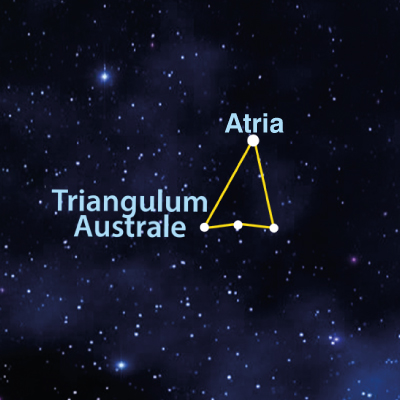
Triangulum Australe
The name of this constellation means the southern triangle in Latin. The three brightest stars in the constellation form an equilateral triangle. The brightest star in the constellation is called Atria.
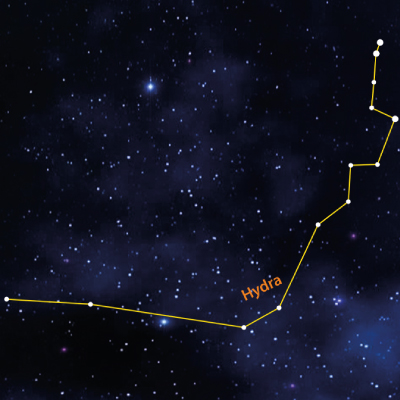
Hydra the Water Snake
Hydra, the water snake, is the largest constellation in the night sky. Some say it comes from the myth of Hercules and some from that of Apollo. The constellation contains seven named stars and many small clusters. The star names are Alphard, Ashlesha, Felis, Lerna, Minchir, Ukdah, and Zhang. The Hydra constellation includes the spiral galaxy NGC 2835 which has a supermassive black hole at the centre, with a mass millions of times that of our Sun.
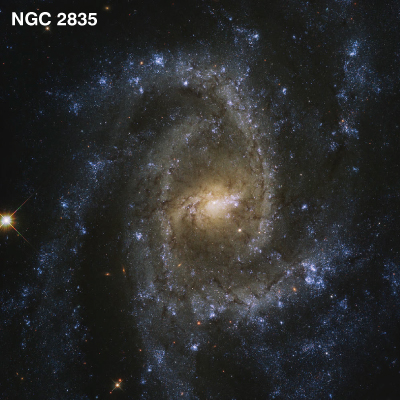
NGC 2835
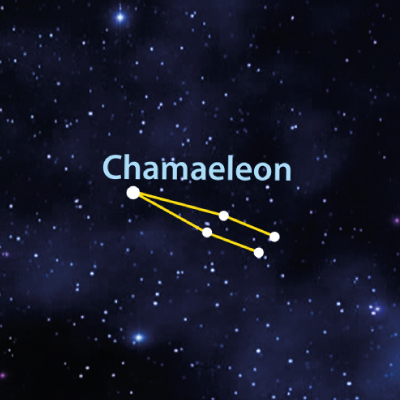
Chamaeleon
Named after a type of lizard, this constellation was created by the Dutch astronomer Petrus Plancius in the 16th century. In Australia this constellation is also called the Frying Pan. The Chamaeleon constellation includes the planetary nebula NGC 3195.
Note: the disc with these constellations is only available in the Southern hemisphere version – if you would like to purchase an additional Southern hemisphere disc please contact customerservices@brainstormltd.co.uk
